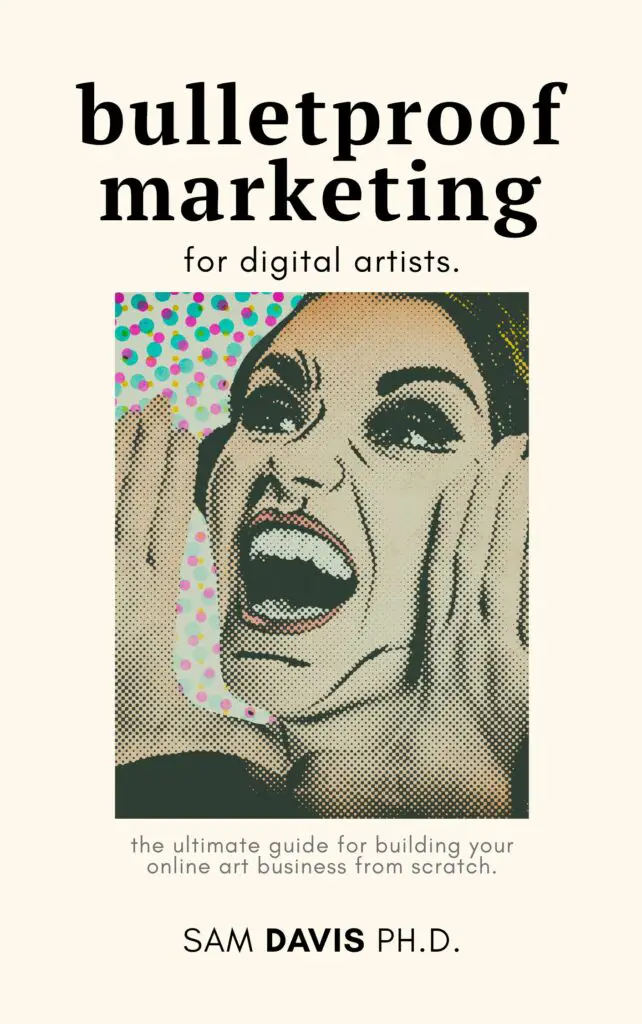As an artist, you know that your work is a reflection of yourself. It’s not just about the skill or technique involved in creating your art, but also about the emotions and ideas that go into it.
Your art is a part of you, and it deserves to be seen by as many people as possible. But in order for people to see it, you need to show it off in the best way possible. And that’s where art blogs come in.
Art blogs can help you share your artwork with the art world, and can also help you improve your skills as an artist. In this art blog (we're getting meta here), we’ll explore some of the best ways to use blogging as an artist.

What is art blogging?
There is no one answer to this question, as art blogging can mean different things to every different blogger. Art is so subjective like that, especially in the art world. In general, though, an art blog can be defined as any type of blog that focuses on artwork and the creative process.
This could include blogs about individual pieces of art, artist interviews, tutorials on how to create certain types of art, or any other topic related to art and creativity.
Can my art blog end up in a magazine?
There is no one answer to this question, as the decision to publish an art blog post in a widely circulated art magazine depends on a variety of factors, including the topic of the blog post, the tone and style of the magazine, and the level of expertise demonstrated by the blogger.
How magazines choose their featured artists is ultimately a mystery. The art world is a very interesting place.
However, if you are an artist who is passionate about blogging and you have a lot to share with readers, there is no reason why your blog couldn't be published in an art magazine. You can read more about getting featured in a magazine for the art business in this post.

Is blogging good for street art?
As an artist, you know that your work is a reflection of yourself. It’s not just about the skill or technique involved in creating your art, but also about the emotions and ideas that go into it. Your art is part of you, and it deserves to be seen by as many people as possible.
Street art can be interesting and messy. It's contemporary, but with a twist. Street art crosses the boundaries between graffiti and real art – so it makes sense that you'd be wondering if a blog was a good place for your street art.
People come to the internet looking for inspiration. Even the best professional artists and graphic designers rely on art blogs for inspiration. Your street art or urban art could be that inspiration. If nothing else, your street art is an important part of your city's culture, so don't be ashamed.
Can my art blog include video?
Today, it’s easier than ever to create an online art blog. The internet gives artists the opportunity to connect with people all over the world, and blogging is one of the easiest ways to do so. For this reason, many professional artists choose to use art blogs as part of their marketing strategy.
The best part about the visual arts is that they cross so many boundaries. If you're a digital artist, it's easy for you to post your digital art online. The best art blogs feature process videos, where independent artists show just how they make their pieces. An art blog is an easy way for you to sell art from the comfort of your own home.
Should I look at other artists' art blogs?
Yes, you should look at other artists' blogs to see what they're doing and get ideas for your own blog. Seeing the contemporary art of fellow artists can help inspire you and give you new ideas for your art. It can also help you learn new techniques and styles.
In addition, looking at fellow artists' blogs can help you build relationships with other artists and promote your artwork to a wider audience. Much of contemporary art is collaboration in the art world. Most artists are also art lovers, so it make sense that they would want to collaborate to product art online.
Don't be afraid to reach out to fellow artists. Even young artists internationally would likely be excited to work with you. You can't make it into the Smithsonian American Art Museum if you never explore and grow as an artist. The art business is not a place for the meek.
A Checklist For Art Blogs
If you're ready to get started with your art blog, we're here to help. Here are some helpful tips and tricks for art blogs:
Use Keywords
Don't limit yourself to the keywords of your subject. Use the phrases art lovers would look for: contemporary art, digital art, visual artist, interior designers, plein air painters. Whatever style you use, make sure it's in your art blog text. This will help you show up around the world in search engines.
Collaborate.
Interview other established artists, brag about the people you met at art fairs, show off your own personal collection like you're an art collector. Every time you make a connection, you're improving your art business. You'll quickly land among the best art blogs if you make it an experience with artist interviews or art business advice. Become a thought leader among artists.
Get fancy with your images.
Since art blogs are about process, show it off. Use your visual culture skills to zoom in on parts of your piece. Hang it somewhere. Show a picture of your dirty brushes. Think of your blog as a very private gallery, or a series of art exhibitions. These art projects are a chance to showcase you as the artist, and ideally, sell art.
Be consistent.
This isn't as important as it used to be, but any art business coach will tell you that consistency makes sales. Even if you're only posting once a month, it'll let you build up your blog collection easily.
Be independent.
Most artists see themselves as an independent artist, but really stand out on your blog. Write in the first person, even if you're writing about how your art studio is organized. Show people that you are a real artist who makes real art. Mention your process often, and make sure it has details about yourself.
Don't get discouraged.
Building an online presence takes time. It's not easy becoming established on social media, and it's even harder to do on your own website. Build your art blog as an artwork archive, and focus on art sales. Creative entrepreneurs are nimble and they're able to be patient as they wait on returns.

